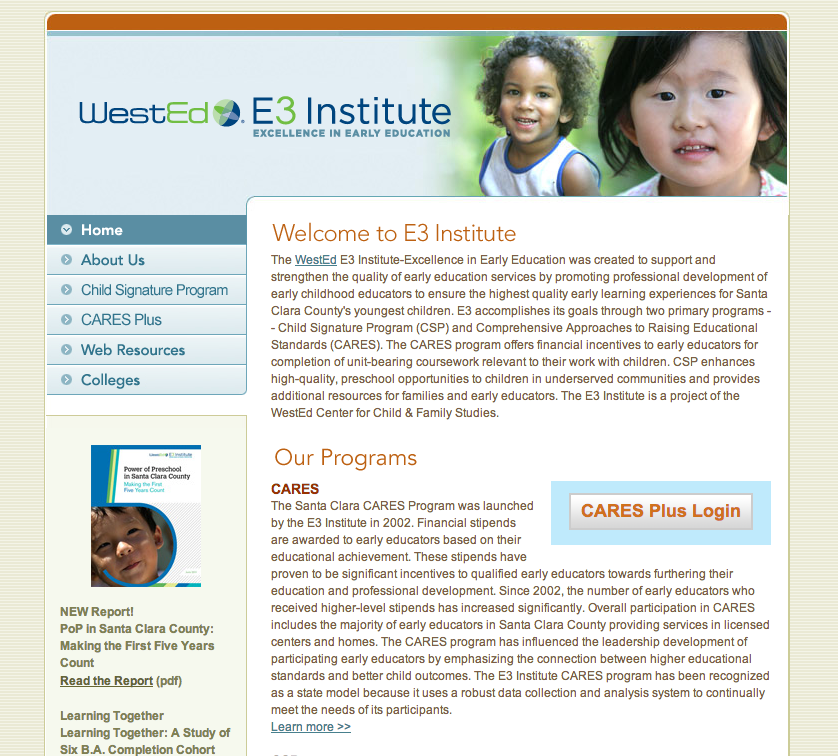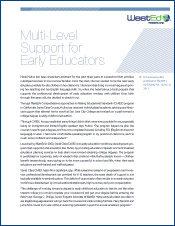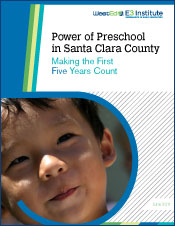
The WestEd E3 Institute—Excellence in Early Education supports and strengthens the quality of early education services by promoting professional development of early childhood educators to ensure the highest quality early learning experiences for children ages 0–5 years in Santa Clara County, California. The purpose of this work is to support Santa Clara County’s QUALITY MATTERS A Strong Start for Kids initiative, which is funded by FIRST 5 Santa Clara County and the Santa Clara County office of Education.
The E3 Institute work in three primary areas to support QUALITY MATTERS:
1. Operate the Quality matters Stipend Program
2. Conduct site ratings for Santa Clara County’s Quality Rating and Improvement System (QRIS)
3. Coordinate data management for program operations and state reporting requirements
The Quality Matters Stipend Program (QMSP) is designed to provide financial incentives for program directors and teaching staff at Quality Matters sites and Family Resource Center staff in Santa Clara County and selected programs from Quality Counts San Benito to pursue their professional development activities. Participants in the program receive a stipend if they complete either 21 hours of professional development or 3-semester units of college coursework. The program serves between 600 -750 early educators each year.
The Quality Matters Rating Process in Santa Clara County is based on California’s Quality Rating and Improvement System (QRIS). The Rating Process evaluates early childhood education program quality, as established in the QRIS Matrix. Early childhood education sites are awarded ratings based on how well their programs meet a specific set of standards. The E3 Institute maintains ratings for 150 programs currently participating in Santa Clara County’s QRIS.
E3’s work with data management crosses all aspects of its work with FIRST 5 Santa Clara County. The data and program manager maintain information in the QRIS data system (Hubbe formally iPinwheel). The data manager also integrates information from Hubbe, the QMSP data system, and the CA Workforce Registry. The data manager coordinates efforts to collect and update data for local and state reporting.
The E3 Institute is a project of WestEd’s Early Childhood Integrated Systems and Policies team under the Early Childhood Learning & Development area of work—dedicated to helping children get a healthy start in life, with a focus on children and families living in poverty, dual language learners, and those with disabilities or other special needs.






